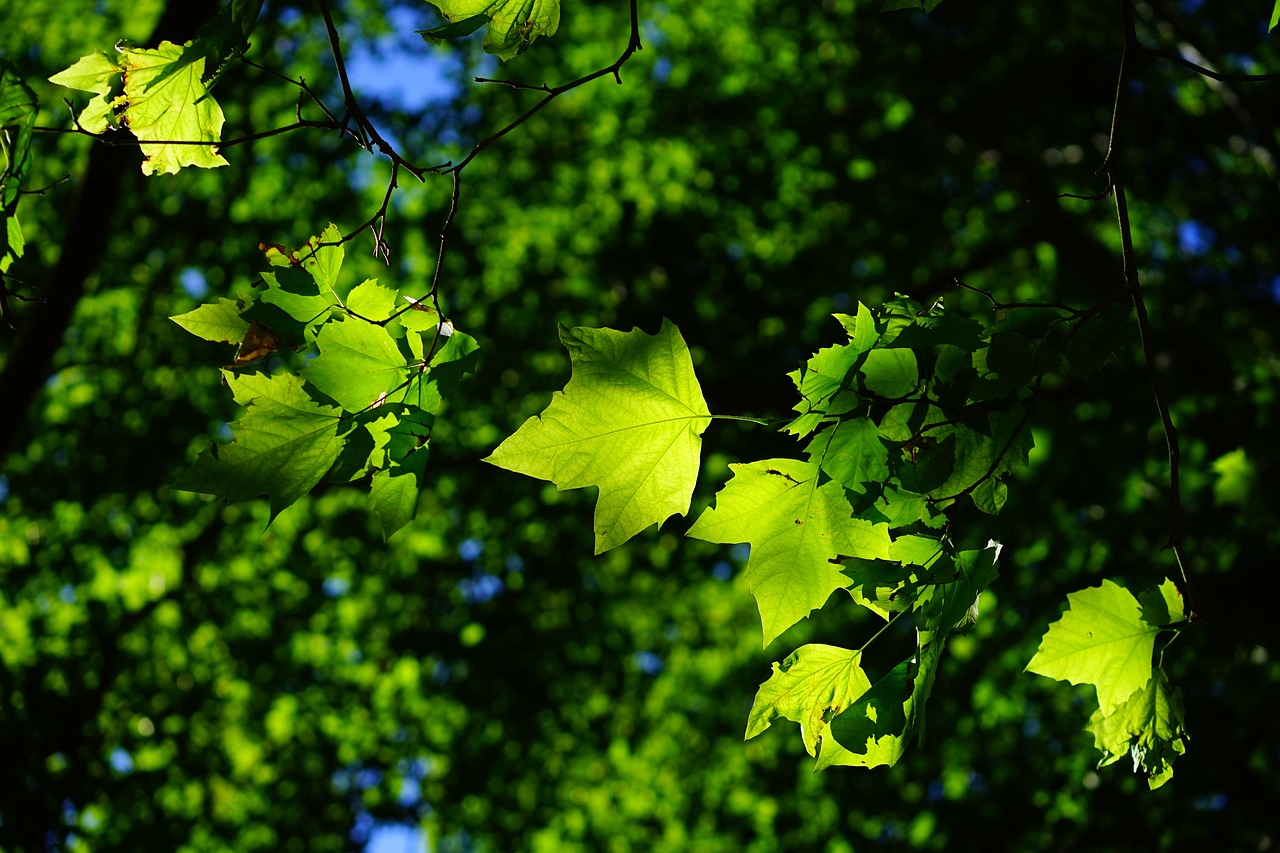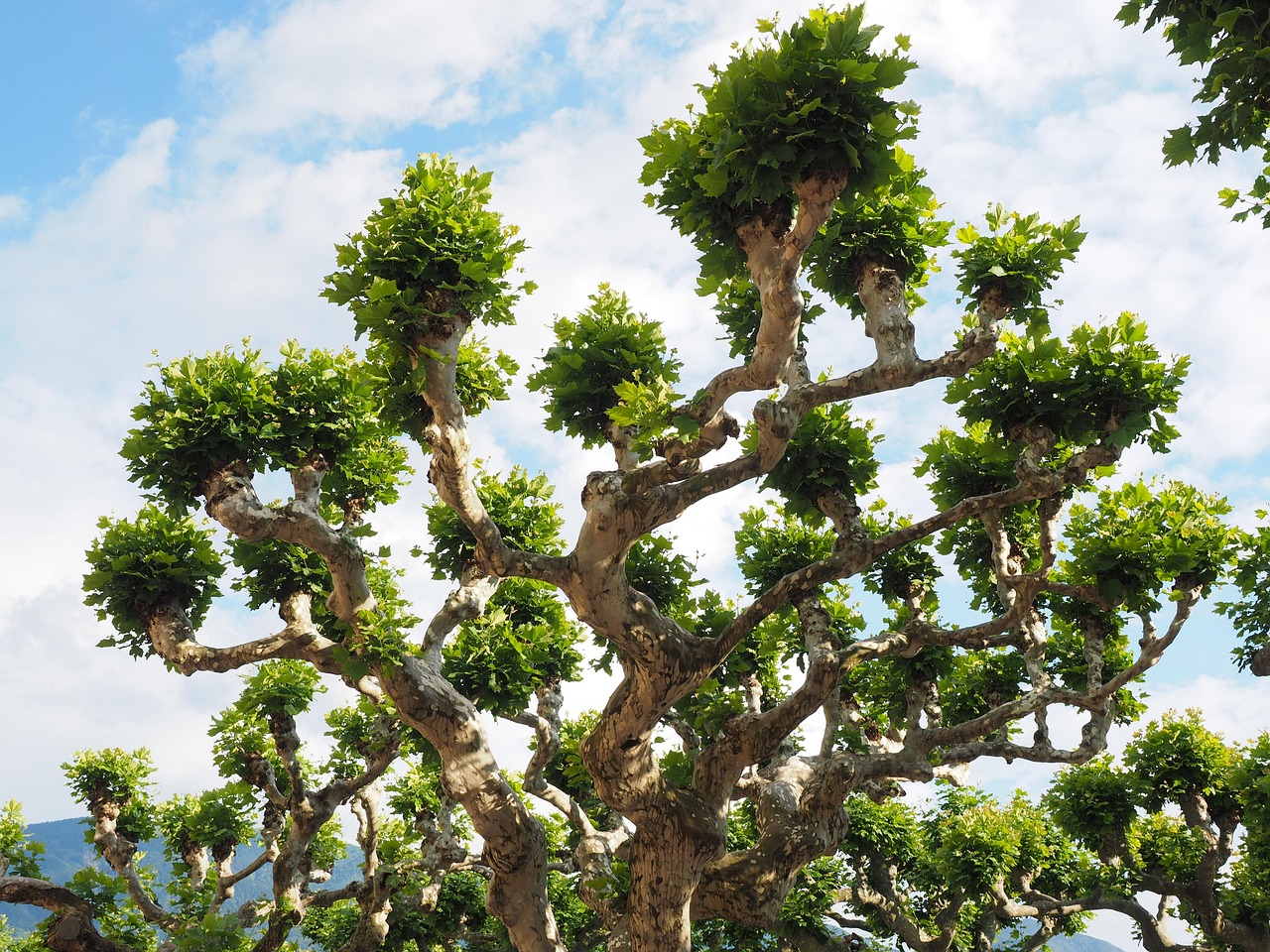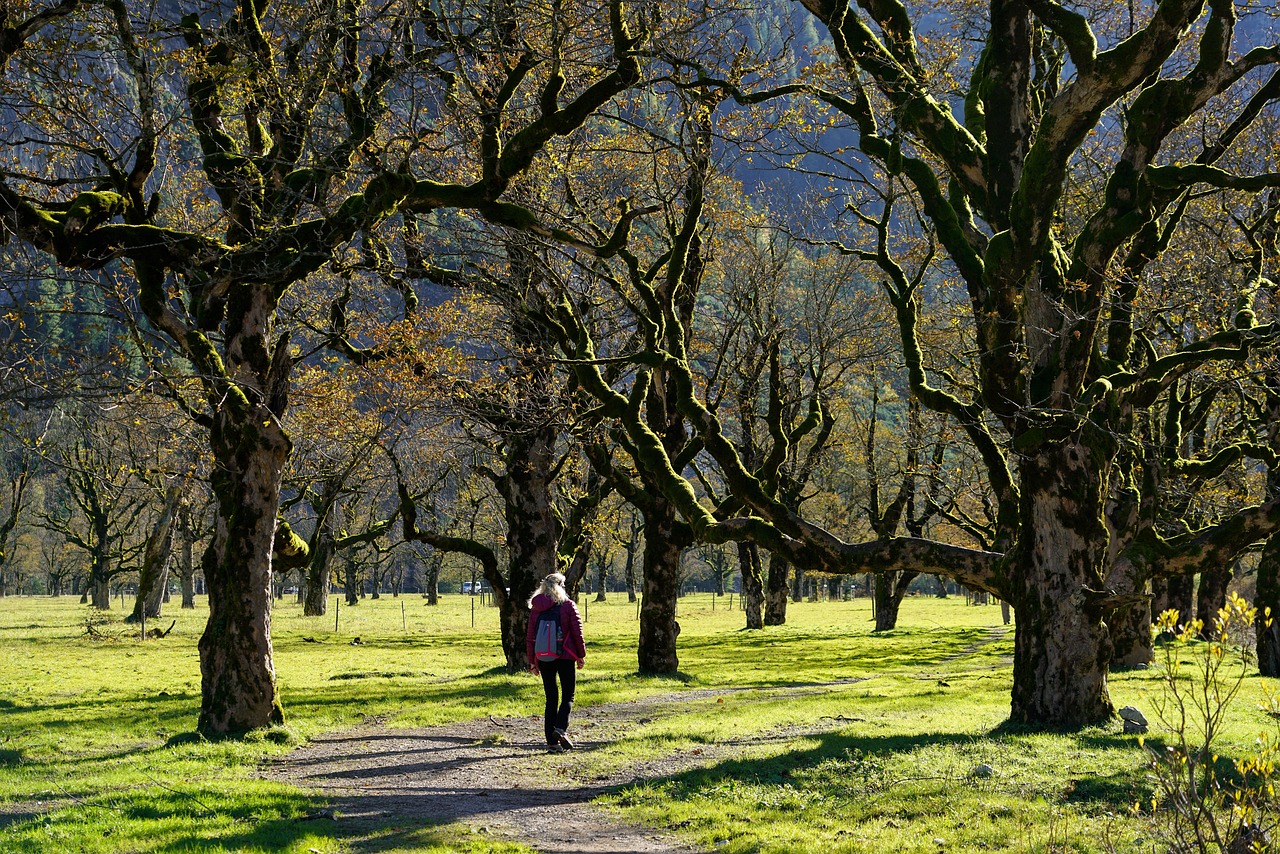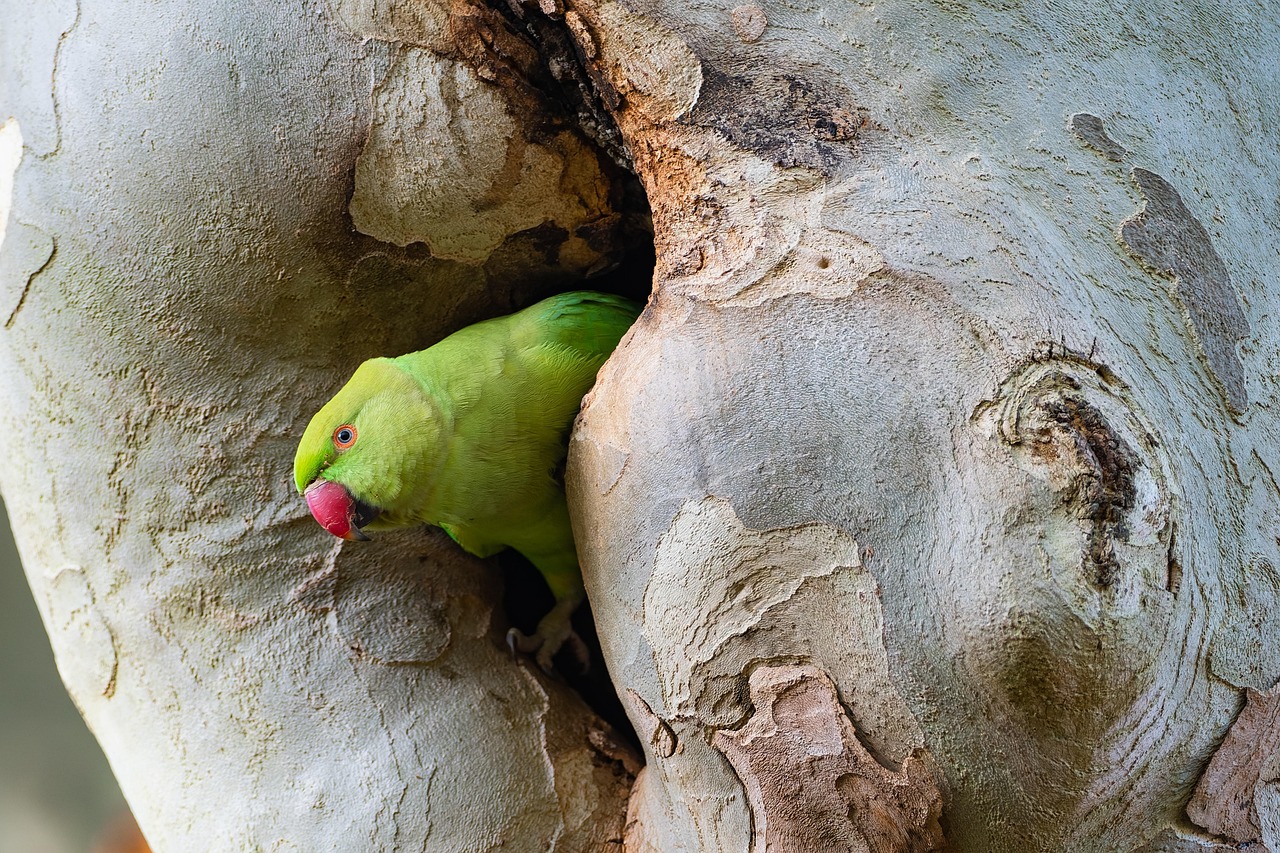The sycamore tree (Platanus occidentalis) exhibits a moderate to fast growth rate, typically reaching heights of 70 to 100 feet. Its broad canopy and adaptability make it an excellent choice for urban greening, providing shade, improving air quality, and enhancing aesthetic appeal in city landscapes.
Sycamore trees are among the largest deciduous trees in North America. They are native to the eastern and central United States and thrive in a variety of soil conditions. These trees are particularly valued for their size and the extensive shade they provide. As a result, they play a significant role in urban environments where green spaces are essential for improving quality of life.

One of the most notable characteristics of the sycamore tree is its fast growth rate. Under optimal conditions, sycamores can grow up to 3 feet per year. This rapid growth allows them to establish themselves quickly in new locations, making them ideal for urban planting. Additionally, their large leaves absorb carbon dioxide and filter pollutants, contributing to cleaner air in city areas.
Growth Rate of Sycamore Trees
The growth rate of sycamore trees can be influenced by various factors, including soil type, water availability, and climate conditions. These trees prefer moist, well-drained soils but can also tolerate drier conditions once established. Below are some key factors that impact their growth rate:
- Soil Quality: Sycamore trees thrive in loamy or sandy soils that retain moisture.
- Water Availability: Regular watering is critical during the first few years for optimal growth.
- Light Exposure: These trees grow best in full sun but can tolerate partial shade.
- Climate Conditions: Sycamores prefer temperate climates with adequate rainfall.
In urban settings, where soil compaction and pollution may limit tree growth, sycamores have shown resilience. They are adaptable and can survive in less-than-ideal conditions, making them a popular choice for cities looking to increase their green cover.

Urban Greening Uses
Sycamore trees serve multiple purposes in urban greening initiatives. Their large size and canopy provide essential benefits that contribute to healthier urban ecosystems. Here are some prominent uses of sycamores in city landscapes:
- Shade Provision: The expansive canopy of a mature sycamore can provide cooling shade to public parks, streets, and playgrounds.
- Air Quality Improvement: Through photosynthesis, sycamores help reduce carbon dioxide levels while producing oxygen, improving air quality.
- Stormwater Management: Their extensive root systems help absorb rainwater, reducing runoff and preventing flooding in urban areas.
- Aesthetic Appeal: The unique bark and large leaves of sycamore trees add visual interest to landscapes, enhancing the beauty of urban environments.
The importance of integrating trees like the sycamore into urban planning cannot be overstated. They not only improve the aesthetic value of neighborhoods but also enhance the overall livability of cities by providing crucial environmental benefits.
Furthermore, sycamores are recognized for their ability to support local wildlife. Birds and insects often find refuge in their branches and bark, contributing to biodiversity even in densely populated areas. This ecological role is essential as cities strive to create habitats for various species while accommodating human activities.

Considerations for Planting Sycamores
When planning to plant sycamores in urban areas, several considerations should be taken into account to ensure their successful establishment:
- Space Requirements: Given their large size at maturity, it is crucial to allow sufficient space for sycamores to grow without interfering with buildings or power lines.
- Soil Preparation: Prior to planting, soil should be tested and amended as necessary to ensure optimal growing conditions.
- Pest Management: Regular monitoring for pests such as aphids or scale insects is important to maintain tree health.
By understanding the growth dynamics and urban applications of sycamore trees, city planners and residents can make informed decisions about incorporating these magnificent trees into their communities.
Benefits of Sycamore Trees in Urban Environments
Sycamore trees offer a multitude of benefits that make them invaluable for urban greening projects. Their ability to adapt to city life while providing numerous ecological advantages enhances the quality of urban ecosystems. Below are some of the primary benefits:
- Improved Air Quality: Sycamores can absorb pollutants such as sulfur dioxide and nitrogen dioxide. Their leaves also trap particulate matter, which helps to purify the air.
- Temperature Regulation: The shade provided by sycamore trees can significantly reduce the urban heat island effect, leading to cooler temperatures in densely populated areas.
- Noise Reduction: Dense foliage can act as a natural sound barrier, helping to minimize noise pollution from traffic and construction.
- Habitat for Wildlife: Sycamores provide shelter and food for various bird species and insects, promoting biodiversity in urban settings.
Sycamore Tree Characteristics
The sycamore tree possesses distinct characteristics that contribute to its popularity in urban landscaping. Understanding these traits helps communities appreciate the tree’s role in their environment.

| Characteristic | Description |
|---|---|
| Height | Typically reaches 70 to 100 feet, providing ample shade. |
| Spread | Canopies can spread 50 to 80 feet, ideal for large open spaces. |
| Bark | Peeling bark reveals a patchwork of colors, adding visual interest. |
| Leaf Shape | Large, lobed leaves that can grow up to 12 inches across. |
| Growth Rate | Moderate to fast, typically growing 2 to 3 feet per year. |
Challenges of Growing Sycamores in Urban Areas
While sycamore trees have numerous advantages, they also face specific challenges when planted in urban environments. Awareness of these challenges can help ensure their successful growth and longevity.
- Soil Compaction: Urban soils are often compacted, which can restrict root growth. This requires careful management when planting.
- Pest Issues: Sycamores can be susceptible to pests like the sycamore lace bug. Regular monitoring is essential to prevent infestations.
- Disease Vulnerability: Fungal diseases can affect sycamores, particularly in humid conditions. Treatment options should be considered when symptoms arise.
- Limited Space: In crowded urban settings, there may not be enough space for mature sycamores to thrive without interfering with infrastructure.
Maintenance Practices for Healthy Sycamores
To ensure that sycamores thrive in urban settings, proper maintenance practices are essential. Here are some recommended practices:
- Regular Watering: Newly planted sycamores require consistent watering until established. Early summer is particularly critical.
- Mulching: Applying mulch around the base of the tree helps retain moisture and prevent weed competition.
- Pruning: Regular pruning encourages healthy growth and improves air circulation within the canopy.
- Pest Management: Implementing integrated pest management strategies can help control potential pest problems effectively.
Sycamores and Community Engagement
The integration of sycamore trees into urban landscapes can foster community engagement and promote environmental stewardship. Communities can participate in tree planting initiatives and educational programs that highlight the importance of trees in urban settings.
Engaging local residents in tree care activities not only enhances their connection to nature but also raises awareness about environmental issues. Schools, community groups, and local governments can collaborate on projects that involve planting and maintaining sycamores, fostering a sense of ownership and responsibility towards the urban environment.
Through these initiatives, communities can collectively benefit from the numerous advantages that sycamore trees provide while promoting a greener and more sustainable urban future.
Sycamore Trees and Urban Climate Resilience
As cities face the challenges of climate change, sycamore trees can play a vital role in enhancing urban climate resilience. Their ability to adapt to various environmental conditions helps mitigate some of the negative impacts associated with urbanization. Below are key ways in which sycamores contribute to climate resilience:
- Carbon Sequestration: Sycamores absorb carbon dioxide, which helps reduce greenhouse gas emissions. This process is critical in combating climate change.
- Heat Regulation: The shade from sycamore trees lowers surface temperatures, which is particularly important in urban areas where heat islands can significantly increase local temperatures.
- Stormwater Management: With their extensive root systems, sycamores help manage stormwater runoff, reducing the risk of flooding during heavy rains.
- Windbreaks: Planting sycamores in strategic locations can act as windbreaks, minimizing the effects of strong winds in urban settings.
Enhancing Biodiversity with Sycamores
Urban environments often suffer from a lack of biodiversity due to habitat destruction and pollution. Sycamore trees can help restore some of this lost biodiversity by providing habitats for various species. Here are some ways in which sycamores contribute to urban biodiversity:
| Species Type | Role in Ecosystem |
|---|---|
| Birds | Sycamores offer nesting sites and food sources, attracting a variety of bird species. |
| Insects | The leaves and bark provide habitats for insects, which are essential for pollination. |
| Mammals | Small mammals may use sycamores for shelter and food, promoting a balanced ecosystem. |
| Microorganisms | The decomposition of fallen leaves supports soil health by providing nutrients. |
Sycamores in Urban Landscaping Design
Incorporating sycamore trees into urban landscaping designs can greatly enhance the aesthetic and functional aspects of public spaces. Their large size and unique features make them a focal point in landscape architecture. Here are some considerations for including sycamores in urban design:
- Strategic Placement: Positioning sycamores in parks, along streets, and near public buildings maximizes their shade and beauty.
- Diverse Planting: Combining sycamores with other native plants can create a rich habitat and visually appealing landscapes.
- Accessibility: Ensuring that public spaces with sycamores are accessible encourages community engagement and interaction with nature.
- Sustainability Practices: Implementing sustainable landscaping practices, such as using organic fertilizers and conserving water, enhances the longevity of sycamore trees.
Public Awareness and Education Programs
Education plays a crucial role in fostering a culture of appreciation for urban trees like sycamores. Communities can develop programs that educate residents about the importance of trees. These programs can include:
- Workshops: Organizing workshops on tree care, planting techniques, and the ecological benefits of trees encourages active participation.
- School Programs: Integrating tree education into school curricula can instill a sense of responsibility toward the environment in young students.
- Community Events: Hosting tree planting days or nature walks can engage residents and promote awareness about local flora.
- Online Resources: Creating informative websites or social media campaigns can spread knowledge about the benefits of sycamores and urban greening efforts.
The Economic Benefits of Sycamore Trees
Beyond their environmental contributions, sycamore trees also provide economic benefits to urban areas. Their presence can increase property values and contribute to local economies. Here are some economic advantages associated with sycamores:
- Increased Property Values: Homes located near parks or green spaces with sycamores often see a rise in property values due to enhanced curb appeal.
- Aesthetic Value: Well-maintained urban landscapes attract tourists and residents alike, boosting local businesses.
- Energy Savings: The shade provided by sycamores can reduce energy costs for cooling homes and buildings during hot months.
- Parks and Recreation Revenue: Parks with mature trees like sycamores can generate revenue through recreational activities and events.
By recognizing the multitude of benefits that sycamore trees provide, cities can make informed decisions about their incorporation into urban environments. This approach not only enhances the quality of life for residents but also promotes ecological sustainability for future generations.
In addition to the ecological and economic benefits outlined, sycamore trees also play a significant role in enhancing community health and wellness. The presence of green spaces in urban environments has been linked to improved mental health outcomes, reduced stress levels, and increased physical activity among residents. Sycamores, with their expansive canopies and robust structure, provide inviting spaces for relaxation and recreation.
Research indicates that individuals living near trees and parks report higher levels of physical activity. This is attributed to the appealing environments created by trees like sycamores, which encourage outdoor activities such as walking, jogging, and cycling. Communities can leverage these benefits by designing pedestrian-friendly pathways and recreational areas that incorporate sycamore trees.
Community Engagement Through Tree Adoption Programs
One innovative approach to fostering community engagement with sycamore trees is the implementation of tree adoption programs. These initiatives invite residents to take responsibility for the care and maintenance of local trees, creating a sense of ownership and pride within the community. Programs can include:
- Adopt-a-Tree Initiatives: Residents can volunteer to care for specific sycamores, ensuring they receive adequate watering, mulching, and monitoring for pests.
- Educational Workshops: Hosting workshops on tree care and environmental stewardship can empower residents with the knowledge they need to participate actively.
- Community Events: Organizing events around tree planting or maintenance days can foster camaraderie and collective action among community members.
By promoting tree adoption programs, cities can enhance community bonds while ensuring the health and sustainability of urban forests. Such initiatives contribute not only to the care of sycamore trees but also to the overall beautification of urban landscapes.
The Future of Sycamore Trees in Urban Planning
As urban areas continue to expand, the importance of integrating trees like sycamores into city planning becomes increasingly clear. Urban planners must consider the long-term impacts of their decisions on both the environment and the community. Future initiatives may include:
- Green Infrastructure Development: Incorporating sycamores into green roofs, vertical gardens, and other innovative designs can maximize green space in densely populated areas.
- Resilient Urban Policies: Encouraging regulations that protect existing trees and mandate the planting of new ones in urban developments will ensure that sycamores remain a part of the urban landscape.
- Climate Adaptation Strategies: Understanding how climate change affects tree species will help communities select the right trees for their environments, ensuring that sycamores remain viable in changing conditions.
Collaboration between city officials, environmental organizations, and community members will be essential for these strategies to succeed. By working together, urban areas can create robust ecosystems that benefit both residents and wildlife.
Final Thoughts
Sycamore trees are more than just beautiful additions to urban landscapes; they are essential components of healthy ecosystems that provide numerous benefits. From enhancing air quality to promoting community well-being, sycamores play a vital role in urban greening efforts. As cities continue to grow and face environmental challenges, integrating these majestic trees into urban planning becomes critical.
Through community engagement, educational initiatives, and forward-thinking policies, cities can harness the full potential of sycamore trees. The collaborative effort to plant, maintain, and appreciate these trees will not only enhance the aesthetic value of urban areas but also contribute to a more sustainable future. The commitment to nurturing sycamores reflects a larger dedication to creating greener, healthier, and more vibrant communities for generations to come.
